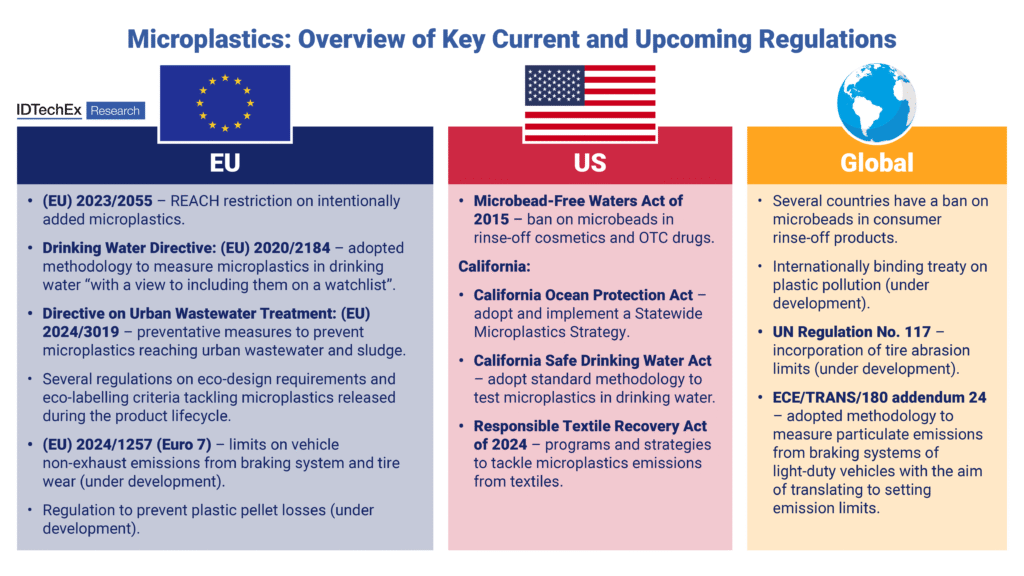Global Report Highlights Urgent Need for Innovation as Microplastics Threat Intensifies
Microplastics have emerged as one of the most pressing environmental concerns of the 21st century, according to a new report by market intelligence firm IDTechEx. Titled “Microplastics 2025: Regulations, Technologies, and Alternatives,” the report examines how growing regulatory pressure and public concern are driving innovation in detection, capture, and sustainable alternatives to microplastic use.
Once a niche issue, microplastics are now known to infiltrate ecosystems, food chains, and even human bodies. As regulators tighten controls, industries are being compelled to reduce microplastic emissions and develop cleaner, biodegradable alternatives. The IDTechEx report provides an in-depth look at global regulatory trends, emerging technologies, and market-leading innovations shaping the future of microplastic mitigation.
“Industries and policymakers must now move from discussion to action,” said Dr. Shababa Selim, Senior Technology Analyst at IDTechEx. “With regulations expanding and public awareness growing, the opportunity to drive change through science, policy, and innovation is more urgent than ever.”
The European Union is leading global regulatory efforts, implementing sweeping measures targeting intentionally added microplastics in products such as fertilizers, paints, cosmetics, and detergents. The regulatory focus is also expanding to cover indirect sources like tire and brake wear in vehicles, microfibers from textiles, and plastic pellet loss during manufacturing.
The IDTechEx report maps out these current and proposed regulations, including the EU’s REACH restrictions, and highlights global policy trends such as the ongoing negotiations of a global plastics treaty.
Detecting and removing microplastics is technically complex due to their variable size, shape, composition, and weathered properties. Innovations in microplastic detection and filtration are being developed to meet these challenges. Technologies such as microfiber filters for washing machines and enhanced treatment systems for wastewater plants are gaining momentum.
IDTechEx highlights promising detection and capture technologies, including those by startups and industry leaders, while also analyzing relevant standards, patents, and ongoing R&D efforts.
Alongside capture technologies, the report emphasizes the growing role of biodegradable alternatives to conventional microplastics. Major companies like BASF, Syngenta, Kuraray, and Covestro are investing in biodegradable agricultural inputs, such as mulch films and seed coatings, to reduce long-term environmental persistence.
In other sectors, innovators are working on alternatives to micro-encapsulation technologies for controlled-release applications in fertilizers, pesticides, and fragrances. While promising, these solutions still face scalability and cost barriers that require continued research and investment.
The Microplastics 2025 report offers forward-looking insights for manufacturers, regulators, and environmental stakeholders. It outlines challenges in measurement consistency, regulatory compliance, and consumer adoption while presenting opportunities for leadership in sustainable innovation.



